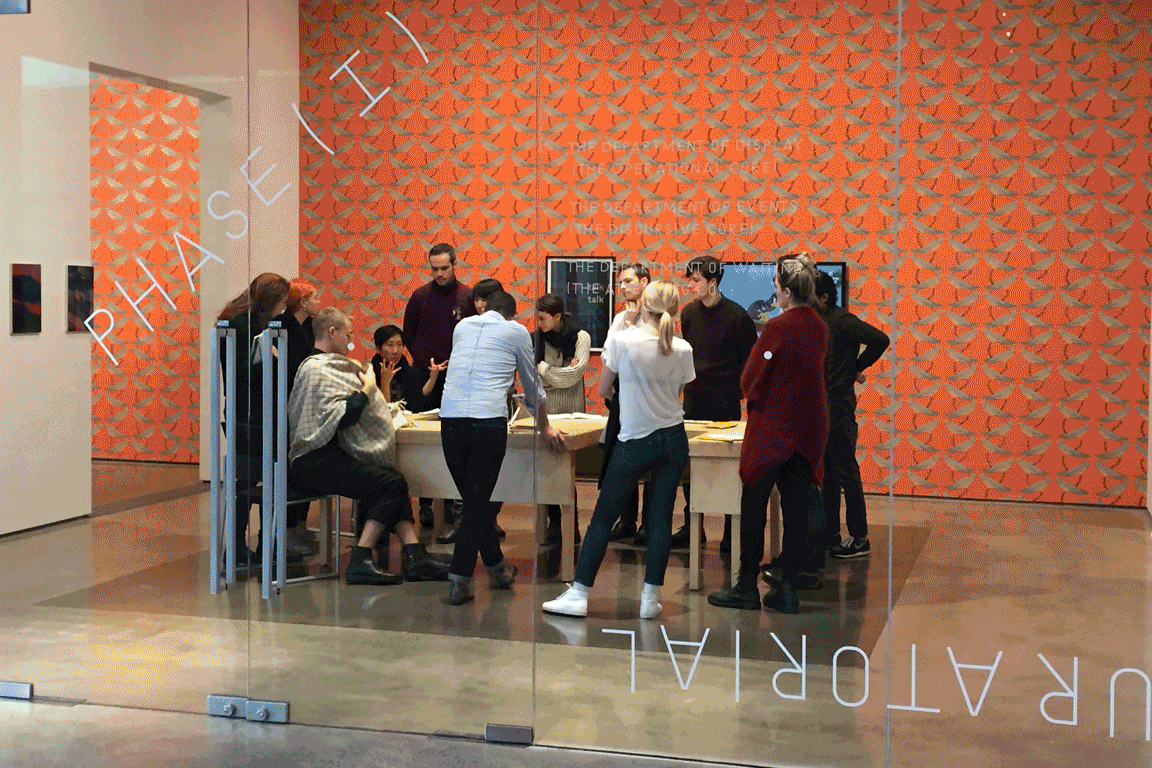Art & Education presents new School Watch reports on the Center for Curatorial Studies, Bard College; Saas-Fee Summer Institute of Art; and the Escuela de Arte Ùtil, and “A tear forms along the seam,” a new Classroom program curated by Jacob Korczynski.
Making and Unmaking the Curator at the Center for Curatorial Studies at Bard College
By Vanessa Thill
“‘We’ve poured a lot of resources into not only collecting current publications from across the globe but also looking back historically and trying to backhoe this whole activity.’ Hessel Museum executive director Tom Eccles said. A larger question becomes apparent: what are the boundaries of curatorial studies? So many of the very foundational Western understandings of the curator as the figure who defines good taste are rooted in race-, class-, and gender-based prejudices, and compounded by disproportionate access to resources. How far should corrective historical approaches go in order to account for current cultural forms?” [read more]
Saas-Fee Summer Institute of Art: A Berlin Intensive at the Juncture of Theory, Praxis, and Art
By Jennifer Teets
“‘Art and the Politics of Collectivity’ fit under the overall aegis of cognitive capitalism, yet one that abides with the idea of an Art Before Philosophy Not After, a work on paper by Saas-Fee Summer Institute of Art director Warren Neidich, which casts art as a mutation of the ‘political-spiritual-psychological relations that constitute the cultural field’ rather than a representation. The 2017 program bulletin echoed this call, stipulating that ‘curating, art production, and writing act to mutate the socio-political-cultural habitus requiring philosophy and theory to continually retool themselves in order create new forms of understanding.’” [read more]
Escuela de Arte Útil: A Proto-Institution Implementing Performance as Usefulness
By Monica Westin
“The Escuela de Arte Útil represents a challenge to one of the features of contemporary art education in which students are asked to simulate or reiterate previous or existing gestures and ideas in art, which then become isolated in institutional frameworks. ‘What we ask in Arte Útil exercises,’ Tania Bruguera said, ‘is to join what is happening in the world and understand that change can only be done collectively and in collaboration with other people with other skills.’ In other words, a student should not worry about making their banner more aesthetic or intellectual and presenting their effort. Instead, the banner should be introduced into an activist realm.” [read more]
School Watch presents distilled perspectives on degree programs in the arts, with interviews, critical texts and editorial exposés on MFAs, Masters, Doctorates, and certificate programs in fine arts, art history, curatorial, cultural and film studies, and other related areas of specialty.
A tear forms along the seam
Curated by Jacob Korczynski
“How do systems of distribution facilitate our encounter with artworks that refuse the status of the unique art object? Artists’ film and video and artists’ books have both occupied key roles within the practices of interdisciplinary artists for successive generations. However, they have existed at the margin of institutions, appearing most often under the departmental auspices of public and education programs or falling within the mandate of libraries rather than exhibitions. In a narrative of art history written by the accumulation of market value sutured to a limitation of access, the mutable and/or multiple status of artists’ film and video and artists’ books positions them as secondary in status to unique art objects. And yet, they produce a way out; a tear forms along the seam when artists’ film and video and artists’ books determine their own conditions facilitated by strategies and systems of distribution.” [read more]
Featuring: Mike Sperlinger; Mason Leaver-Yap; Banu Cennetoğlu; Hank Bull and Alex Muir; Adam Pendleton, Ralph Lemon, and Lizzie Feidelson; and Gregg Bordowitz.
Classroom features thematically organized lectures and conversations chosen by artists and thinkers on issues relevant to their practice and contemporary artistic discourse.

